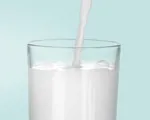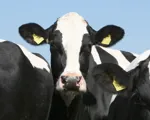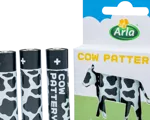
We know that dairy isn’t for everyone – whether for health or taste reasons. Find out about lactose intolerance and the nutritional differences between dairy and alternatives with our guide.
In the current day and age, people’s diet options and choices are wider and more varied than ever before. This can be motivated by personal choices to give up certain foods or focus on specific types of food, while some are motivated by how their body responds to things found in particular foods.
The important thing to consider if you are thinking about giving up dairy, or any food type, is to know what areas of nutrition you will need to find elsewhere.
What is lactose intolerance?
Being lactose intolerant means your body is unable to digest lactose, a type of sugar found in milk and other dairy products. This is usually due to your body not producing enough of something called lactase, an enzyme that breaks down lactose into other sugars that can be absorbed into the bloodstream.
What foods to avoid if you’re lactose intolerant
If you have lactose intolerance, then you should typically avoid foods that naturally contain lactose, such as milk and yogurt. While you might be able to consume small amounts without issue, such as certain types of cheese, for some people even small quantities of lactose can affect your body.
However, you can find plenty of lactose free dairy products stocked in supermarkets, like the Arla Lactofree range, which uses lactase in order to break down the lactose into simple sugars and making it easier to digest for those who are lactose intolerant.
If you think you might be lactose intolerant, you should consult your doctor to make sure and to get more information on diet.
Should I give up dairy if I’m lactose intolerant?
This is entirely your choice – if lactose intolerance is the only motivator, then there are lactose-free dairy products that mean you can keep eating dairy as part of your diet and retain the nutritional benefits such as the high calcium content.
However, if you’d rather give up dairy – either in isolation or as part of a wider dietary shift, e.g. going vegan – then that can prove beneficial to some people who are sensitive to lactose.
However, dairy alternatives won’t have the same nutritional composition as dairy products. Although they perform the same functional role in a meal, whether that’s an alternative to milk, cheese, cream or otherwise, many dairy alternatives contain vastly different ingredients meaning they don’t always perform the same nutritional role within a person’s diet.
Nutritional differences between dairy and dairy alternatives
Whether it is for dietary reasons or simply preference, you can substitute milk and dairy products with a variety of alternatives. If you are cutting dairy out of your diet, even if that’s just one type such as milk, then you need to make sure your body is still getting all the nutrients it needs.
Because there are so many types of dairy alternatives available, you’ll need to check the label of the one you choose to know what it’s providing your body, but here are a few things to note:
- Dairy-free alternative drinks which work as stand-ins for milk typically have no nutritional value in their raw form, requiring fortification processes to add in the vitamins and minerals our bodies need, while milk already contains these vitamins and minerals naturally.
- Dairy-free milk alternatives typically contain 0.1-0.4g protein per 100g compared to milk’s protein content of 3.5 g per 100g, while soy drink is the only alternative type that has a protein content comparable to milk.
- Organic milk alternatives don’t go through this fortification process, as this would stop them from being called organic, which means they lack the nutritional content which milk has and creates a larger nutritional deficit that needs to be filled by other foods.
- Dairy-free alternatives to cheese are usually made of coconut fat and modified starch, meaning they are not a source of protein and often also lack the vitamins and minerals found in dairy cheeses. This means that if you decide to swap to using a dairy-free cheese alternative, you’ll need to find alternative food sources to ensure your body still gets the nutrition it needs to function normally.





































